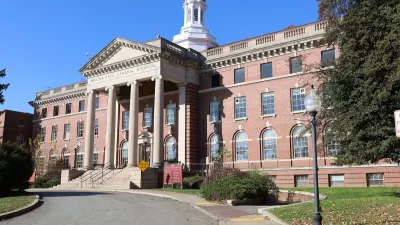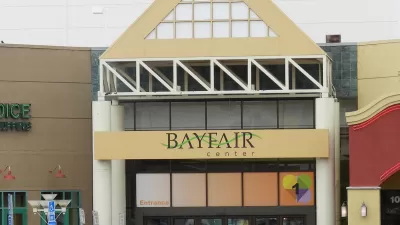Redeveloping closed correctional facilities in ways that foster just and thriving communities is a growing trend across the United States.

Everyone’s been talking about adaptive reuse of office buildings in the wake of record office vacancies following the pandemic. But that isn’t the only type of vacancy on the rise, according to an article from the Vera Institute of Justice. Jail and prison closures — driven by a steady decline in the United States correctional population and a glut of closed facilities — have increased since 2000.
The trend presents “an opportunity to reallocate energy, funds, space, and personnel toward collectively beneficial enterprises that help foster thriving and just communities,” writes Elizabeth Allen.
The article outlines and offers real-life examples of ways former correctional institutions can be reimagined to revitalize communities and economies, including:
- Housing
- Industry and commerce
- Agriculture, parks, and recreation
- Social and community services
- Renewable energy microgrids
“Done thoughtfully, redevelopment can bring community renewal,” Allen writes. Reuse of former jails and prisons can result in new businesses and jobs to foster local economies. “Former facilities, too, can be restored for reconciliation and reparation—as commemorative, educational sites or ones addressing the root causes of criminal legal system involvement” and to promote racial, social, and cultural justice.
FULL STORY: How to Redevelop Former Jails and Prisons for the Collective Good

Study: Maui’s Plan to Convert Vacation Rentals to Long-Term Housing Could Cause Nearly $1 Billion Economic Loss
The plan would reduce visitor accommodation by 25,% resulting in 1,900 jobs lost.

Alabama: Trump Terminates Settlements for Black Communities Harmed By Raw Sewage
Trump deemed the landmark civil rights agreement “illegal DEI and environmental justice policy.”

North Texas Transit Leaders Tout Benefits of TOD for Growing Region
At a summit focused on transit-oriented development, policymakers discussed how North Texas’ expanded light rail system can serve as a tool for economic growth.

How Community Science Connects People, Parks, and Biodiversity
Community science engages people of all backgrounds in documenting local biodiversity, strengthening connections to nature, and contributing to global efforts like the City Nature Challenge to build a more inclusive and resilient future.

Alabama: Trump Terminates Settlements for Black Communities Harmed By Raw Sewage
Trump deemed the landmark civil rights agreement “illegal DEI and environmental justice policy.”

Dear Tesla Driver: “It’s not You, It’s Him.”
Amidst a booming bumper sticker industry, one writer offers solace to those asking, “Does this car make me look fascist?”
Urban Design for Planners 1: Software Tools
This six-course series explores essential urban design concepts using open source software and equips planners with the tools they need to participate fully in the urban design process.
Planning for Universal Design
Learn the tools for implementing Universal Design in planning regulations.
City of Santa Clarita
Ascent Environmental
Institute for Housing and Urban Development Studies (IHS)
City of Grandview
Harvard GSD Executive Education
Toledo-Lucas County Plan Commissions
Salt Lake City
NYU Wagner Graduate School of Public Service




























